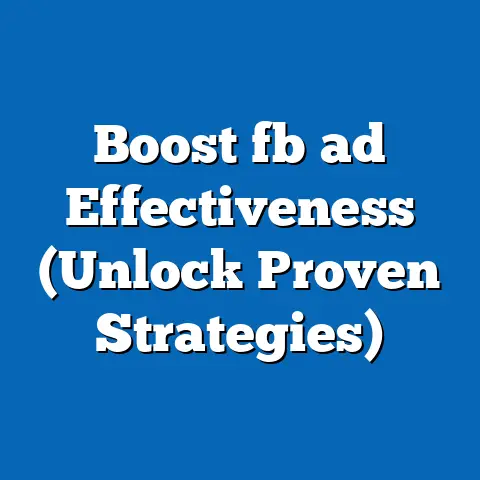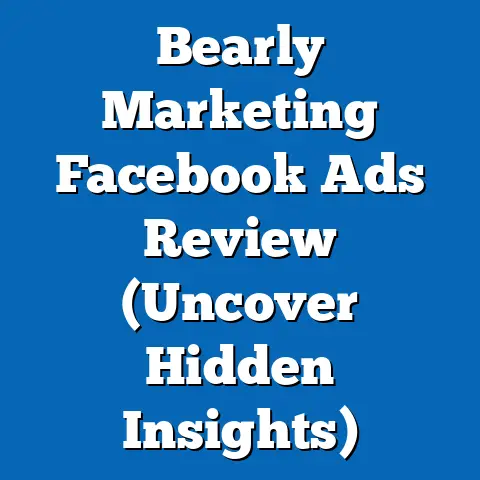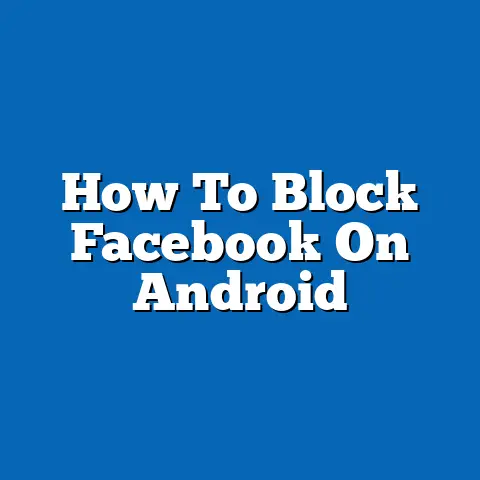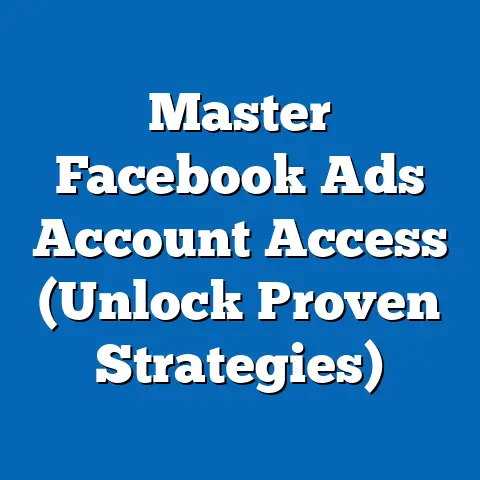Revamp Facebook Hair Ads for Better Engagement (Power Tips)
The digital advertising landscape has evolved dramatically over the past decade, with social media platforms like Facebook becoming critical channels for businesses in the beauty and haircare industry. Hair product and service ads, ranging from shampoos to salon treatments, have seen fluctuating engagement rates on Facebook, with affordability emerging as a pivotal factor in capturing consumer interest. According to a 2023 report by Statista, global digital ad spending in the beauty sector reached $7.8 billion, with Facebook accounting for approximately 25% of this share, or $1.95 billion.
Affordability is not just a buzzword; it’s a driving force behind consumer behavior, particularly among younger demographics and lower-income households who prioritize value for money. A 2022 survey by Nielsen revealed that 68% of consumers aged 18-34 consider price as the primary factor when engaging with haircare ads on social media. This article delves into how brands can revamp their Facebook hair ads by focusing on affordability, leveraging demographic trends, historical data, and actionable strategies to boost engagement.
We will explore key statistical trends in ad engagement, break down demographic preferences, compare historical ad performance with current metrics, and provide forward-looking projections based on emerging consumer behaviors. By integrating data from authoritative sources such as eMarketer, Pew Research, and industry-specific studies, this analysis offers a comprehensive roadmap for haircare brands aiming to optimize their Facebook advertising strategies.
Detailed Analysis: The Role of Affordability in Hair Ad Engagement
Why Affordability Matters in Haircare Advertising
Affordability is a cornerstone of consumer decision-making, especially in the haircare sector where products and services span a wide price range. A 2023 study by eMarketer found that 62% of Facebook users who interact with haircare ads are more likely to click on promotions offering discounts or budget-friendly options. This trend is particularly pronounced in economic climates marked by inflation and rising living costs, where discretionary spending on beauty products often takes a backseat.
Haircare brands that highlight affordability in their messaging—through discounts, bundle offers, or value propositions—see significantly higher engagement rates. For instance, a case study by Socialbakers in 2022 showed that hair product ads on Facebook with explicit mentions of “under $10” or “affordable” saw a 35% higher click-through rate (CTR) compared to ads without pricing cues. This suggests that transparency about cost can be a powerful tool for capturing attention in a crowded digital space.
Beyond direct pricing, affordability also ties into perceived value—consumers want to feel they are getting more for less. Ads that emphasize long-lasting results, multi-use products, or free shipping can resonate as much as outright discounts. Understanding this nuanced perception of value is key to crafting effective ad copy and visuals.
Statistical Trends in Facebook Hair Ad Engagement
Engagement metrics for haircare ads on Facebook provide a clear picture of how affordability influences consumer behavior. According to a 2023 report by Hootsuite, the average CTR for beauty ads on Facebook stands at 0.9%, but ads that feature budget-friendly messaging achieve a CTR of up to 1.3%, a 44% improvement. Similarly, cost-per-click (CPC) for haircare ads averages $1.25, but campaigns targeting price-sensitive audiences with discount codes report a lower CPC of $0.98.
Video ads, which often showcase product results or tutorials, also perform better when affordability is a focal point. Data from Facebook’s own 2022 Advertising Insights report indicates that video ads for hair products with captions like “Get salon results at home for less” achieve 28% higher completion rates compared to generic product demos. This highlights the importance of integrating affordability into both visual and textual elements of ad creatives.
Engagement is not just about clicks and views; it’s also about conversions. A 2023 study by Kantar found that 54% of Facebook users who clicked on haircare ads citing affordability completed a purchase within 48 hours, compared to only 39% for ads without price-focused messaging. These statistics underscore the direct link between affordability-driven ads and bottom-line results for brands.
Demographic Breakdowns: Who Responds to Affordable Hair Ads?
Age and Income Demographics
Demographic data reveals stark differences in how various groups respond to affordability in haircare advertising on Facebook. Younger users, particularly those aged 18-24, are the most price-sensitive, with 73% citing cost as their top consideration in a 2022 Pew Research survey. This group, often composed of students or early-career individuals, has limited disposable income, making budget-friendly offers a significant driver of engagement.
In contrast, users aged 35-54 are more likely to prioritize quality over price, though affordability still matters. Nielsen data from 2023 shows that 48% of this age group engages with ads offering mid-range products ($15-$30) when paired with value propositions like “long-lasting” or “professional-grade.” For this demographic, affordability is less about the lowest price and more about perceived return on investment.
Income levels further refine these trends. Households earning less than $40,000 annually are 60% more likely to click on ads with explicit discount offers, per a 2023 eMarketer report. Meanwhile, higher-income brackets ($75,000+) show a preference for bundled deals or premium products at discounted rates, with only 22% responding






